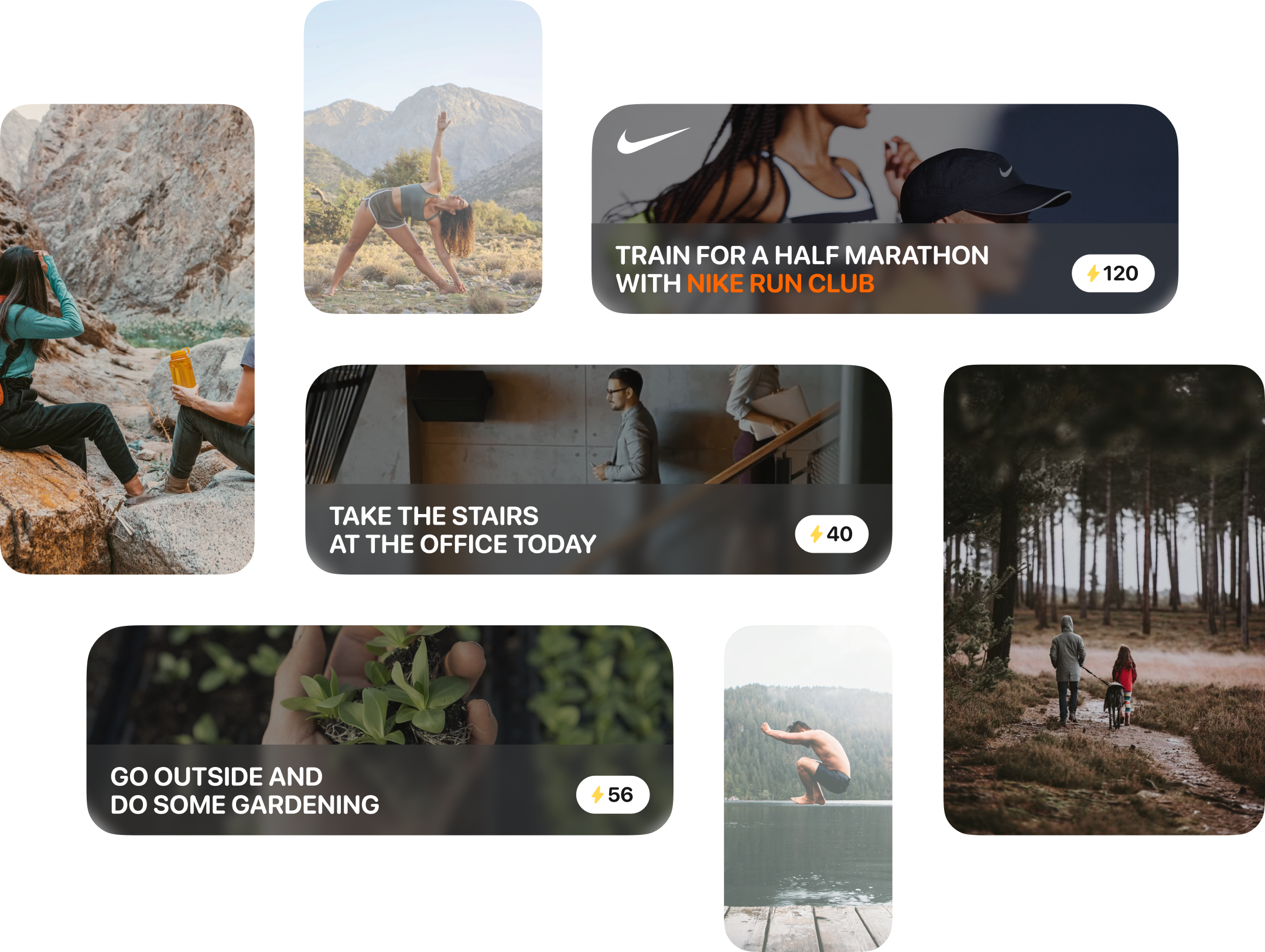Deliverables
Concept development
Interactive design
Experience design
The brief
Vigor is a fitness app that helps busy Americans stay active through personalized, gamified workouts
based on interests identified during onboarding.
I conducted 10 user interviews to understand current fitness needs and why many people avoid the
gym. The conversations revealed that fitness looks different for everyone, yet gyms mainly serve a
narrow group. Many people also feel constrained by the belief that working out must happen in a gym.
This project helped me better understand user needs and translate those insights into clear,
practical interfaces.
The ask
Create a fitness experience based on your own interpretation, designed
primarily for mobile and Apple Watch.
Key findings
Busy Americans struggle to fit fitness into daily life. Gyms can feel intimidating, and many prefer
activities they enjoy over machines or weights.
My designs are based on the insights from my interviews and research.
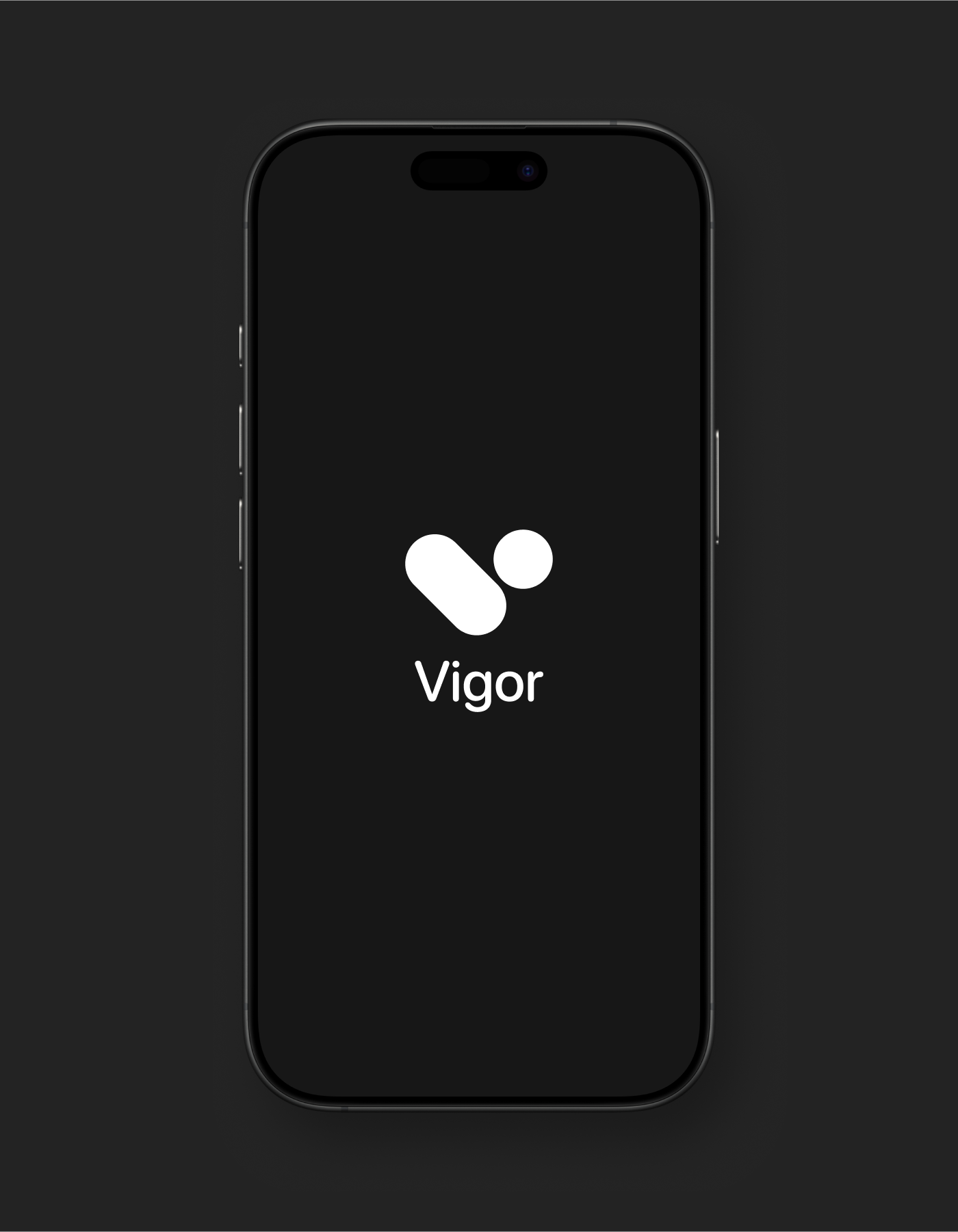
Splash Screen
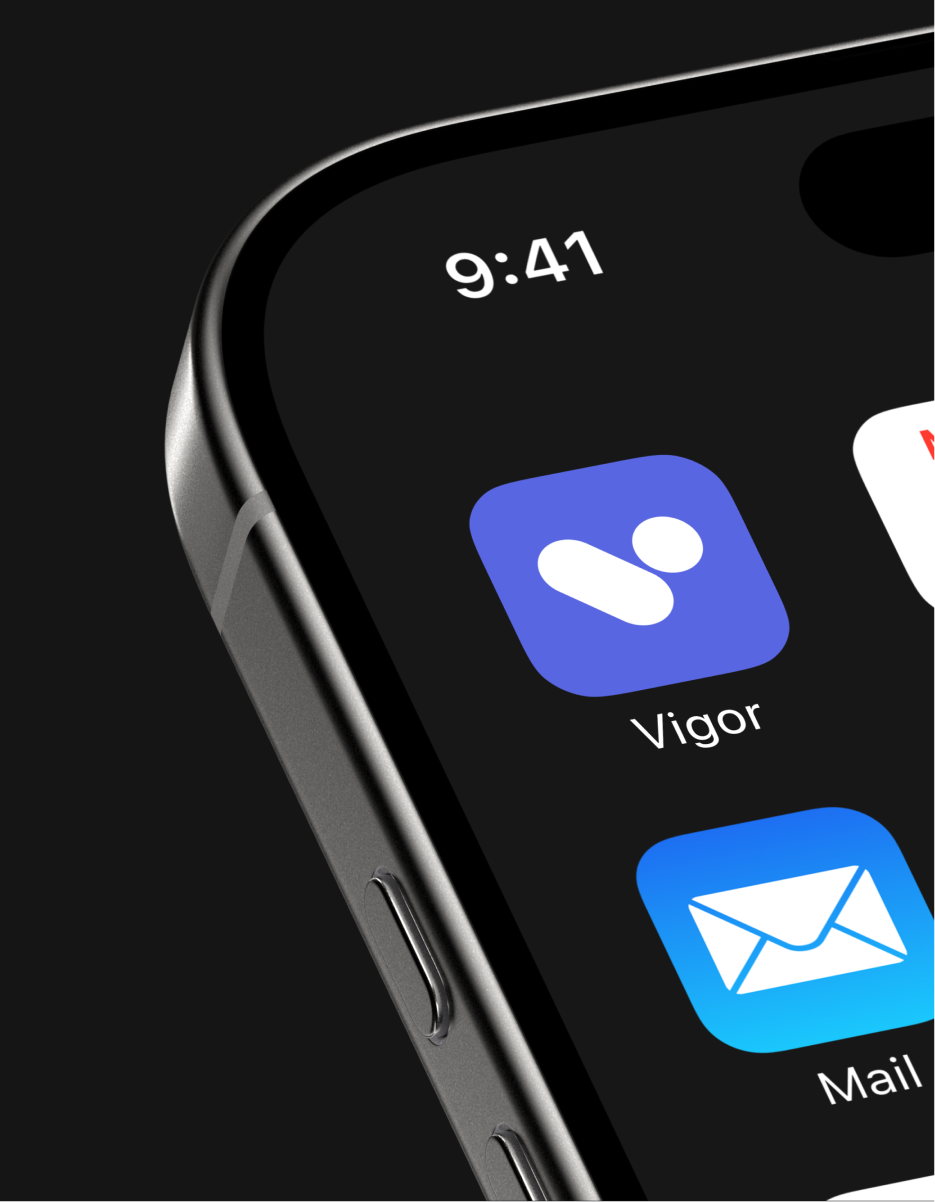
Default App Icon
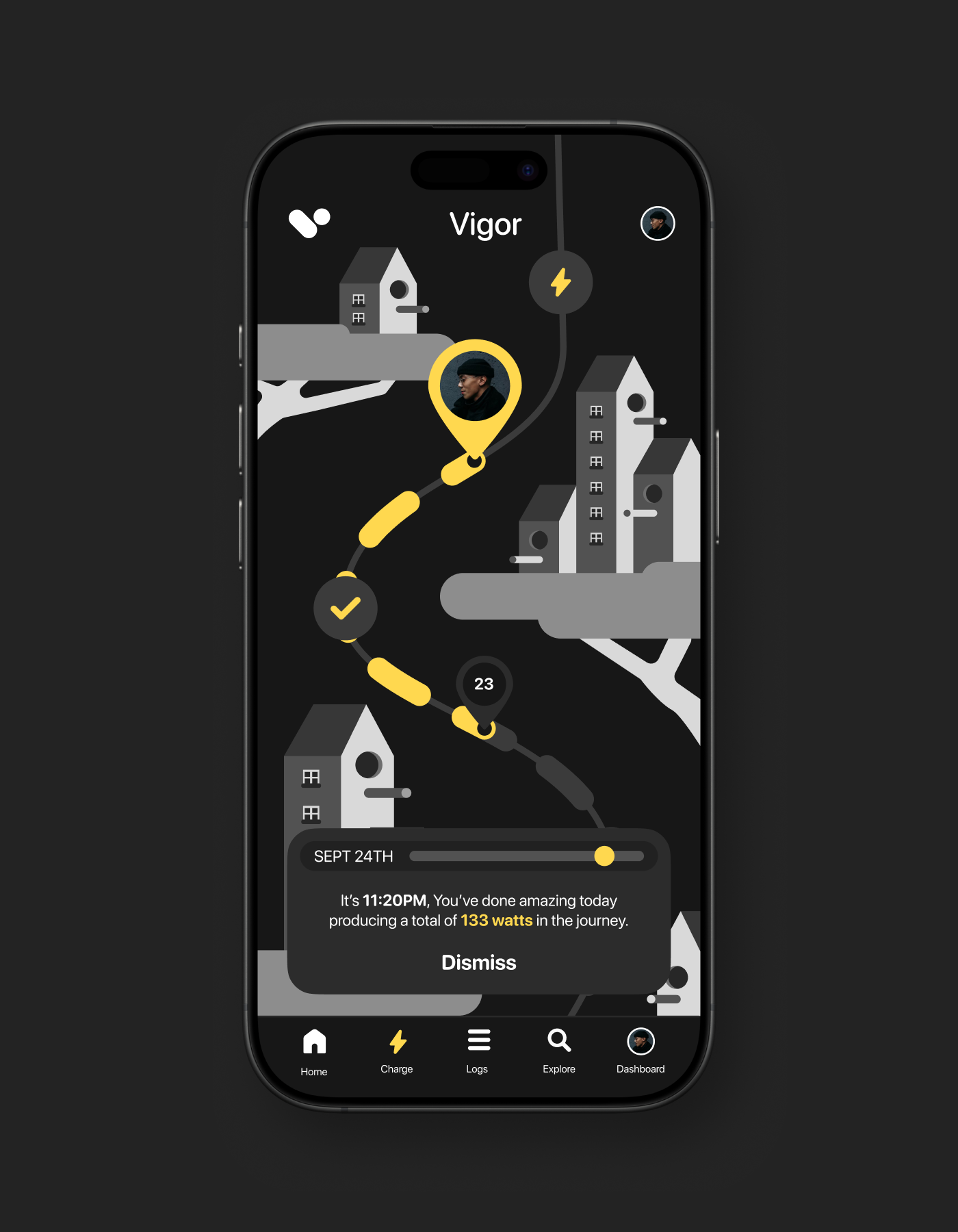
Map auto routes based on amounts of charges users perform
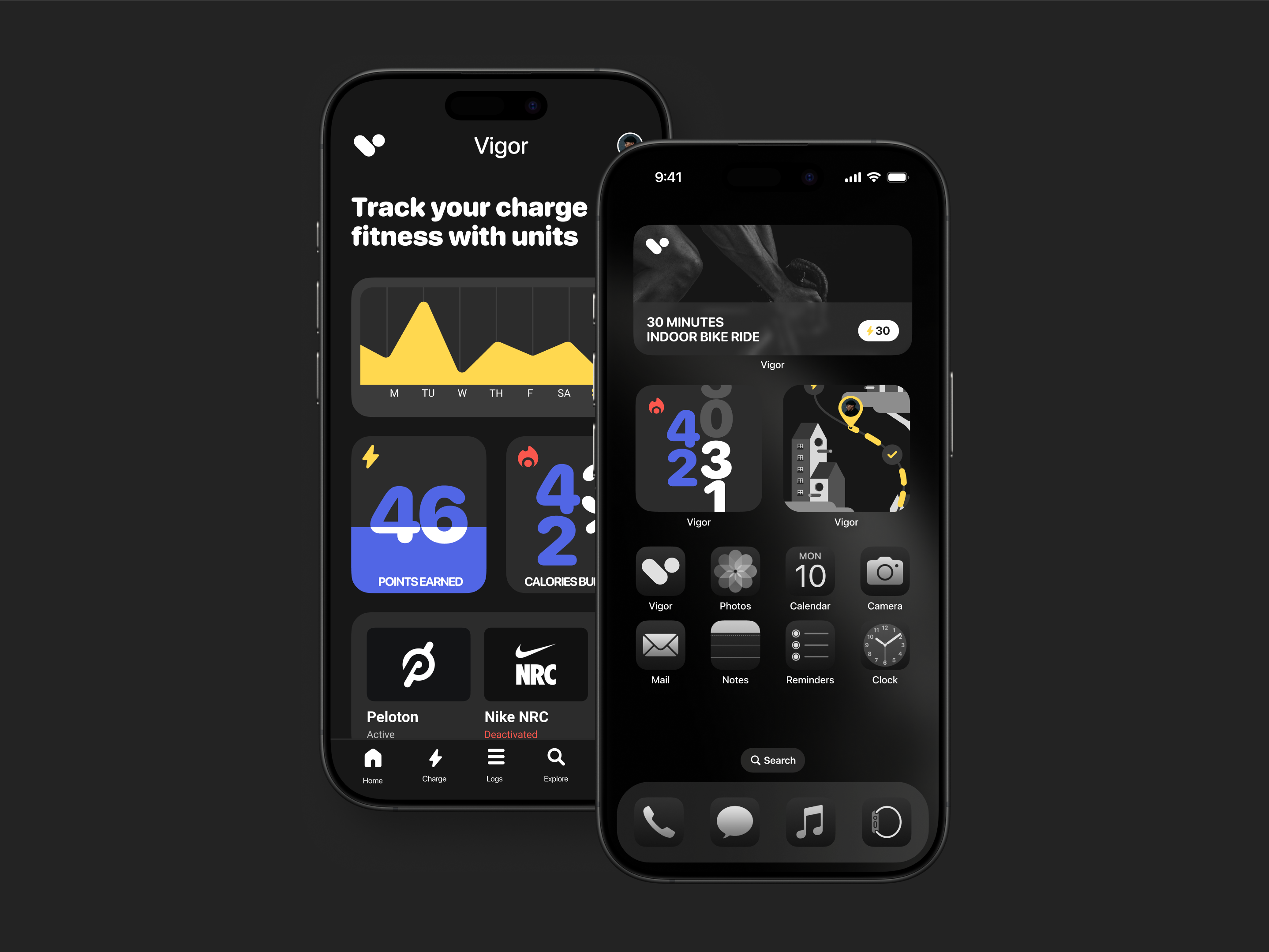
Add widgets to your mobile devices
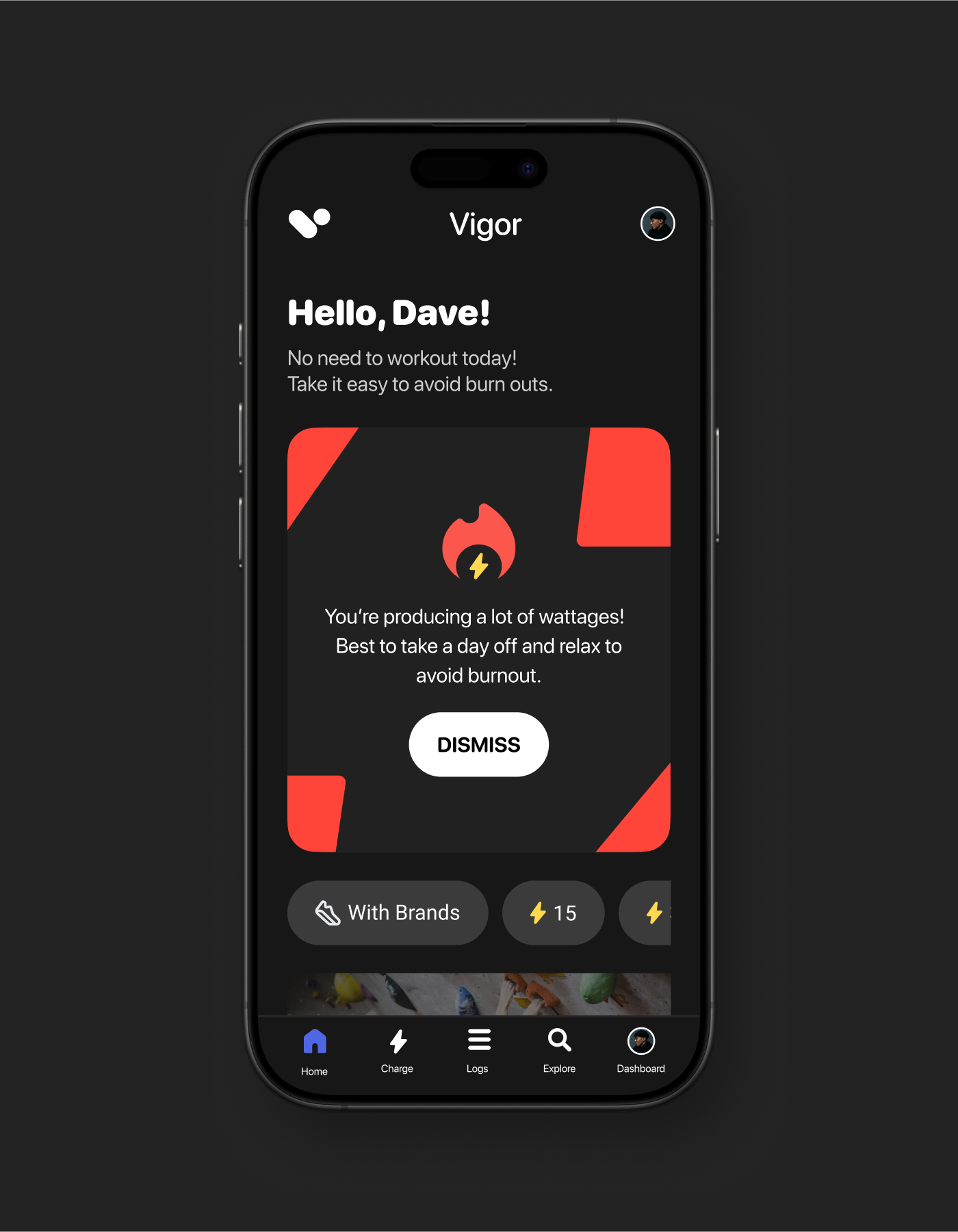
Friction state to avoid users burn out
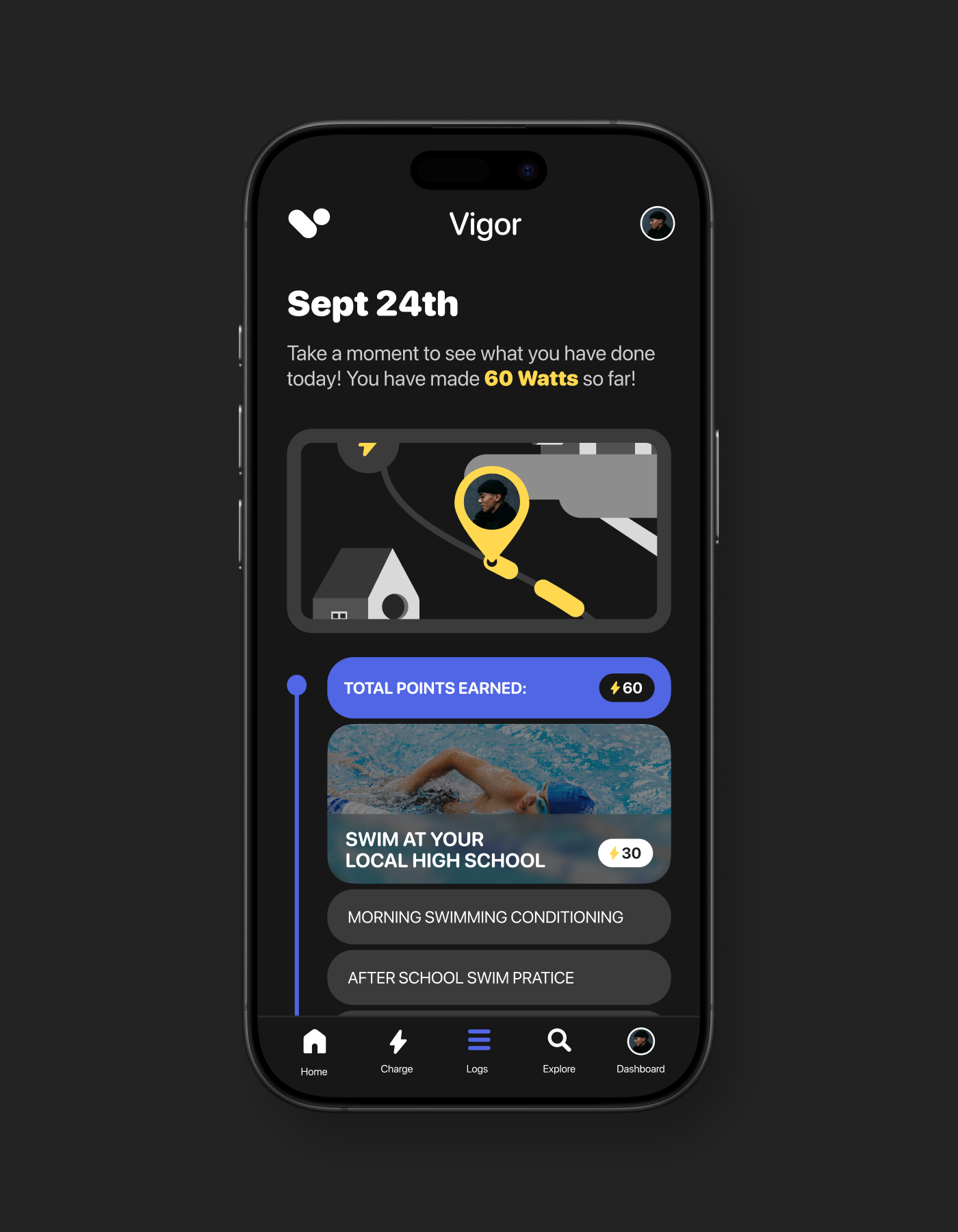
Log workout to earn charges

Vigor on watch device
Fitness Through What You Love
Interviews revealed that people are more motivated to stay active when doing activities they
enjoy—many of which also deliver excellent exercise benefits.
Iterating Until It Feels Right
I developed wireframes to refine interactions, focusing on key design goals:
Gamification
Incorporating gamification creates a reward system that motivates engagement and supports
personal growth within busy lifestyles.
Point System
A ⚡ charge indicates energy expenditure, helping users easily track how much energy their
activities burn



Reflections
Growth Opportunities
Users' insights into actions:
I enjoyed learning how to turn user insights into actionable design
decisions. The
project was open-ended, allowing me to explore and define key objectives based on user
needs.
Initially, I had a design direction, but I realized that my icons and type
scale didn’t
align well for optimal usability. After several rounds of refinement, I improved the
visual design to create a more user-friendly interface, and I’m excited about the
direction it's heading.
Midway through the project, I needed to pivot my approach to user fitness
point
tracking. By introducing gamification, I transformed point tracking into "charges ⚡," a
system users could easily relate to through the concept of energy usage, making the
feature more engaging and intuitive.






